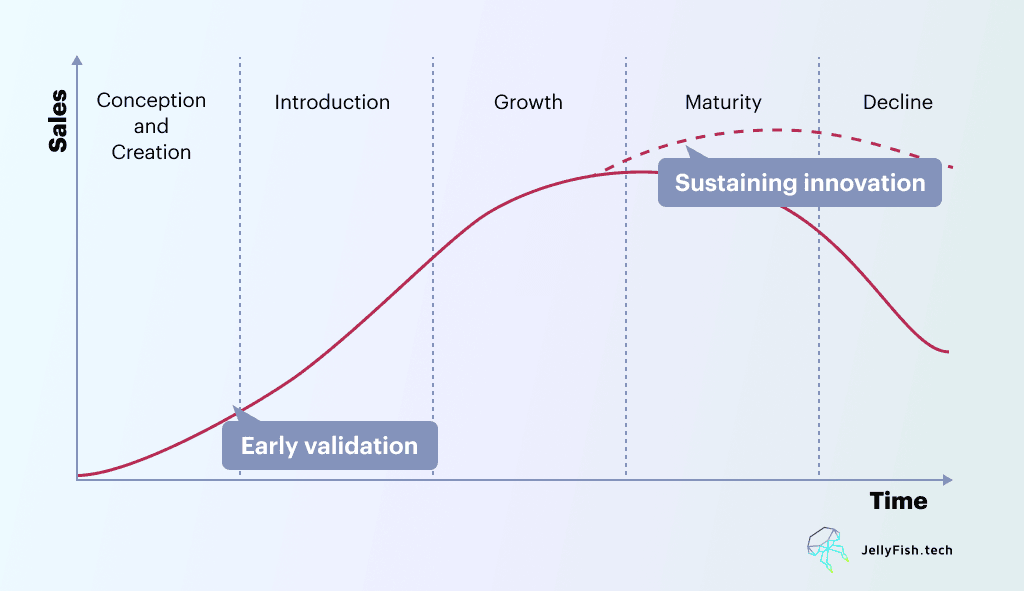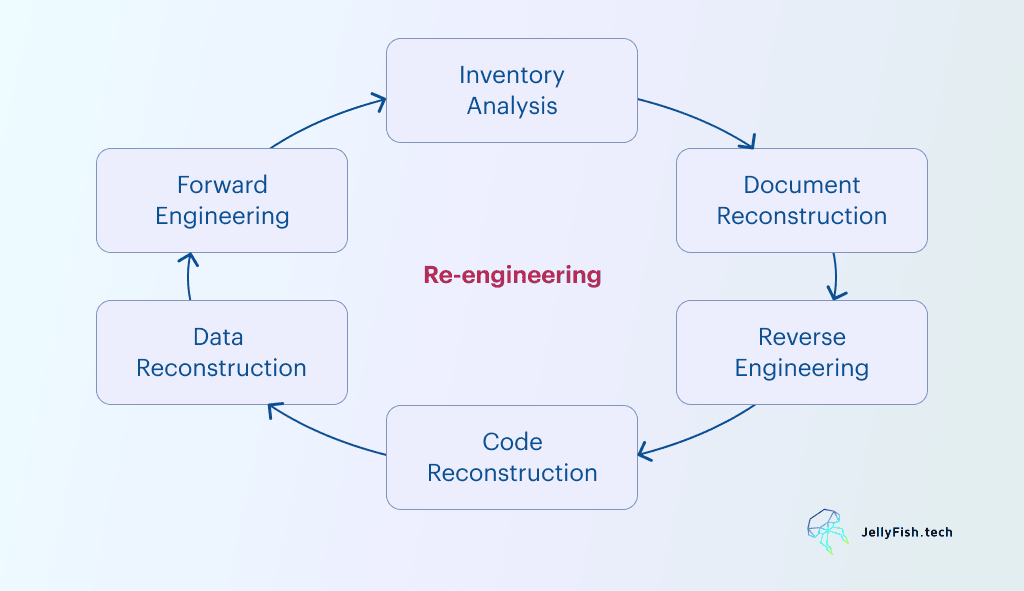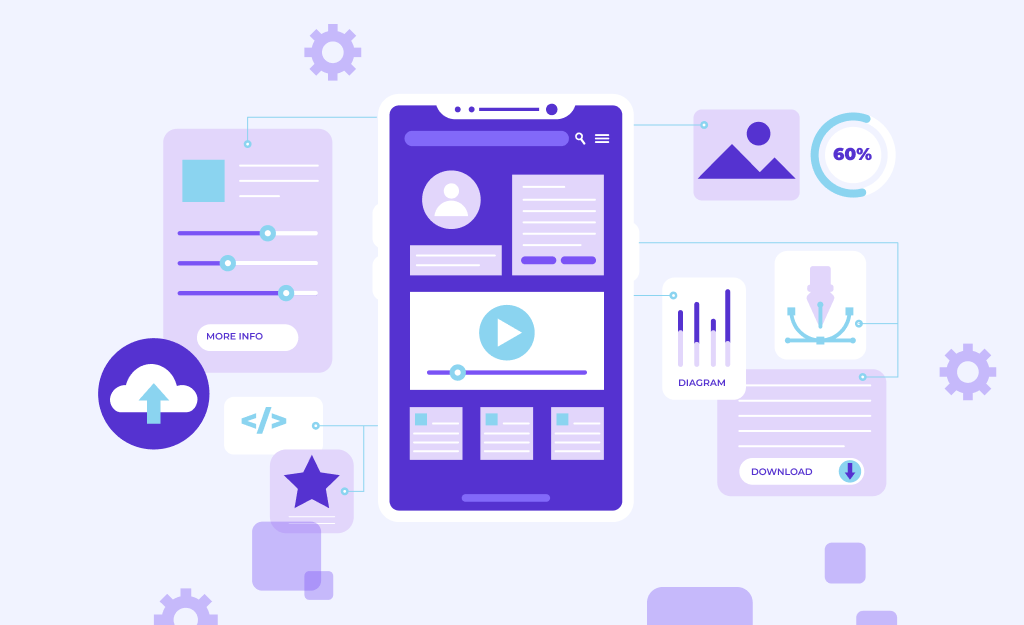
Enhancing performance with software reengineering services
In the modern era of information technology, software has evolved to become an indispensable asset for businesses.
Consequently, software development and businesses rely heavily on reengineering to optimize their old applications while they make them fully compatible with the latest technology. Improving the existing products is one of the top priorities for companies in their digital transformation efforts:

What is software reengineering: software reengineering use cases
Software reengineering is a process of improving the quality of software. It is a systematic approach to changing an existing system’s structure and/or behavior, aiming to improve it. As opposed to just making minor changes or incremental improvements, reengineering involves changing much more than just code: it also affects people and processes around it. Reengineering is usually performed by a team of people with different skills and expertise (e.g., developers, testers, and project managers).
Some common reasons for software reengineering include:
- Improving performance or scalability
- Fixing bugs or security vulnerabilities
- Making upgrades easier (by replacing old technologies with newer ones)
- Changing the data model
- Adding new features
Besides, the software product lifetime is an additional factor to consider. A software product’s market introduction could happen considerably earlier, during the product’s conception and creation stages. Because of the correlation between technical debt accumulated during the early phases of software development and subsequent growth stage constraints, consideration of quality concerns must begin at an extremely early level.

Signs your software requires reengineering
There are many signs that signify when your product requires software reengineering services. One of the most common is when it becomes difficult to maintain or update a system. The other symptoms are:
You are facing performance issues. If your application is slow or crashes often, or if you’re experiencing unexpected outages, those could be signs that the software needs updating or reengineering.
You want to implement new features. If you want to add new functionality to your existing app, it might be time for a reengineering project. That way, your engineers can build new features in a way that will make them easier to maintain and update in the future.
Your team is growing. As your business grows, so does your team — which means more developers working on the same project at once. This can lead to errors and bugs that only get worse with time. A reengineering project can help ensure that new features are implemented consistently and safely by making sure all code follows best practices and is adequately documented for future use by other developers on the team.
Lack of customer satisfaction. Customers that complain about your software are a good indicator that you need to reengineer it. Surveying current consumers might reveal valuable information about how to refine your product for future users.
Changes in market trends. If you are noticing changes in your industry or market trends that affect how people use your product, then it’s time to reengineer it so that it meets those new demands. For example, suppose you’re selling image editing software but people no longer edit images on their computers due to cloud storage services like Dropbox and Google Drive. In that case, it might be time for a new version of your software that works with cloud storage instead of local storage devices like hard drives or SD cards.

👉 Contact our experts to determine whether your software needs reengineering
Benefits of software reengineering
Software reengineering is a process that brings together software engineering, testing techniques, and other similar processes such as performance evaluation. The end product of the software reengineering process includes better quality software products and brings the following benefits:
- Improved Performance: Software reengineering can improve the performance of an application by increasing its reliability, efficiency, usability, and maintainability.
- Enhanced Functionality: With this approach, you can add new features or enhance existing ones without making any changes to the codebase or underlying architecture.
- Reduced Cost: When choosing software product reengineering services, you don’t need to throw away your old code— you just need to modify it so that it behaves differently than before.
- Improved Quality: The main purpose of reengineering is to improve the overall quality of the software product by finding and fixing bugs, improving the design, and reducing its complexity.
- Lower Maintenance Cost: By eliminating bugs early in the development phase, you can limit their impact on maintenance expenditures in the future. The greater the number of flaws discovered during the design process, for instance, the fewer errors will be discovered during testing and debugging; fewer defects necessitate less maintenance effort.
- Faster Development Time: Reusable code saves time by allowing developers to spend more time implementing functionality rather than writing common routines over again each time they’re needed in a different context (for example, creating a user interface).
Software reengineering tools & stages

Software reengineering is a cyclic process that involves the integration of two or more sources to produce a unique set of requirements. Even while the integration of software releases necessitates modifications and additions to enhance the quality and performance, it might present difficulties in terms of time, cost, and teamwork. The accomplishment of software reengineering depends on the correct execution of a series of stages:
1. Software audit
At Jellyfish.tech, legacy software reengineering begins with an audit of the existing program. An in-depth look into the current codebase and its technical debt is part of this process. For instance, keeping outdated systems running costs businesses in the United States an estimated $85 billion annually due to the burden of bad tech.
The audit’s objective is to learn about the product’s current state, its functionality, and the required enhancements. The necessity of a reengineering project and the nature of the resulting product can be better articulated with the data at hand
Additionally, an audit helps in identifying potential risks and opportunities associated with a reengineering project.
2. Roadmapping
After identifying all the necessary requirements for new application architecture, it is time to develop a roadmap for its development and delivery. This roadmap should include clear milestones with estimated completion dates for each stage of the development process involved in delivering that feature set or module into the production environment.
The main challenge in defining a roadmap for the software modernization project is that it needs to be aligned with business requirements and needs. The second challenge is that the components of the roadmap need to be prioritized. For example, if you are migrating an application from one technology stack (language and framework) to another one (different language and framework), then there are certain steps that can be done at once and some other steps have to be done sequentially.
3. Designing new software architecture
After defining the vision for the new application architecture, it is time to create a high-level design that outlines the major components and APIs needed for building each feature or function. You should also consider how these features will be integrated into existing applications or databases so that they can benefit from their existing functionality without having to rewrite any code from scratch.
In the context of developing a new software program, high-level design is the method by which the entire framework is conceived. It comes after requirements collecting but prior to detailed design.
High-level design is meant to provide you with a bird’s-eye view of the whole software, including all the important parts and how they connect. It should provide sufficient detail to explain the system’s intended operation, its intended functionality, its intended interactions with other systems, the manner in which data will be stored, the intended users, and so on.
4. Refactoring legacy application code
The fourth step is to refactor the legacy application code base to support the new architecture design. This involves rewriting or modifying existing code so that it uses new interfaces instead of directly accessing databases or other data stores. It also involves removing obsolete features from legacy code bases if they are no longer needed for any reason (such as security reasons).
Refactoring is not just about making code pretty or following best practices, although it can be used for those purposes. It is also about making sure that code works as expected and that changes made to one part of the system do not break other parts of the system.
This step is critical because even after we have finished our design and architecture changes, there will always be more work to do in the future. For example, when changing database schemas or migrating data between systems, you need to ensure that any ongoing maintenance activities do not cause regressions or break existing functionality.
5. Performance testing & Quality assurance
Performance testing and quality assurance (QA) are two of the most important aspects of the software reengineering process. Application performance bottlenecks can be found and fixed with the help of performance testing, which involves running the tested software under a variety of load situations. Quality assurance, on the other hand, entails that a product meets customer requirements and business objectives.
During the performance testing step, we compare the app’s actual performance to that specified in the requirements document. Testing how well an application performs under load by subjecting it to big amounts of data is also performed during this stage. In this phase, we also conduct stress testing to locate any weak points in the framework that could result in the application crashing or consuming too many resources. An application must be able to withstand heavy usage without crashing or failing due to a lack of resources, which is what stress testing is designed to check.
Prior to releasing a product into a production environment, quality assurance focuses on ensuring that all issues discovered at different phases of software development have been rectified. This procedure also involves identifying defects in existing products as well as finding ways to improve product quality through process improvements and defect prevention programs.

Cost of software reengineering services
Software reengineering services cost is an important factor when it comes to software development. It is one of the most important tasks that any software company can do.
The cost of legacy software reengineering services depends on various factors such as:
- The type of application that you want to reengineer.
- The number of users who are using your application or have access to it.
- The time frame in which you want the task completed within.
These factors are just some of the things that will determine how much reengineering will cost your business, but they are not all there is to think about when looking at the costs associated with software product reengineering services.
Wrapping up
Reengineering is, all things considered, the optimal method for businesses to adopt when they are trying to improve their software solutions. Since having a solid software solution is critical for any company, reengineering is a popular strategy for getting there. Overall, software reengineering services are a one-stop shop for all your software development needs. Our team has the skills, drive, and resources to take any project to completion. Get in touch with us to discuss how we can assist you in the software optimization process.




